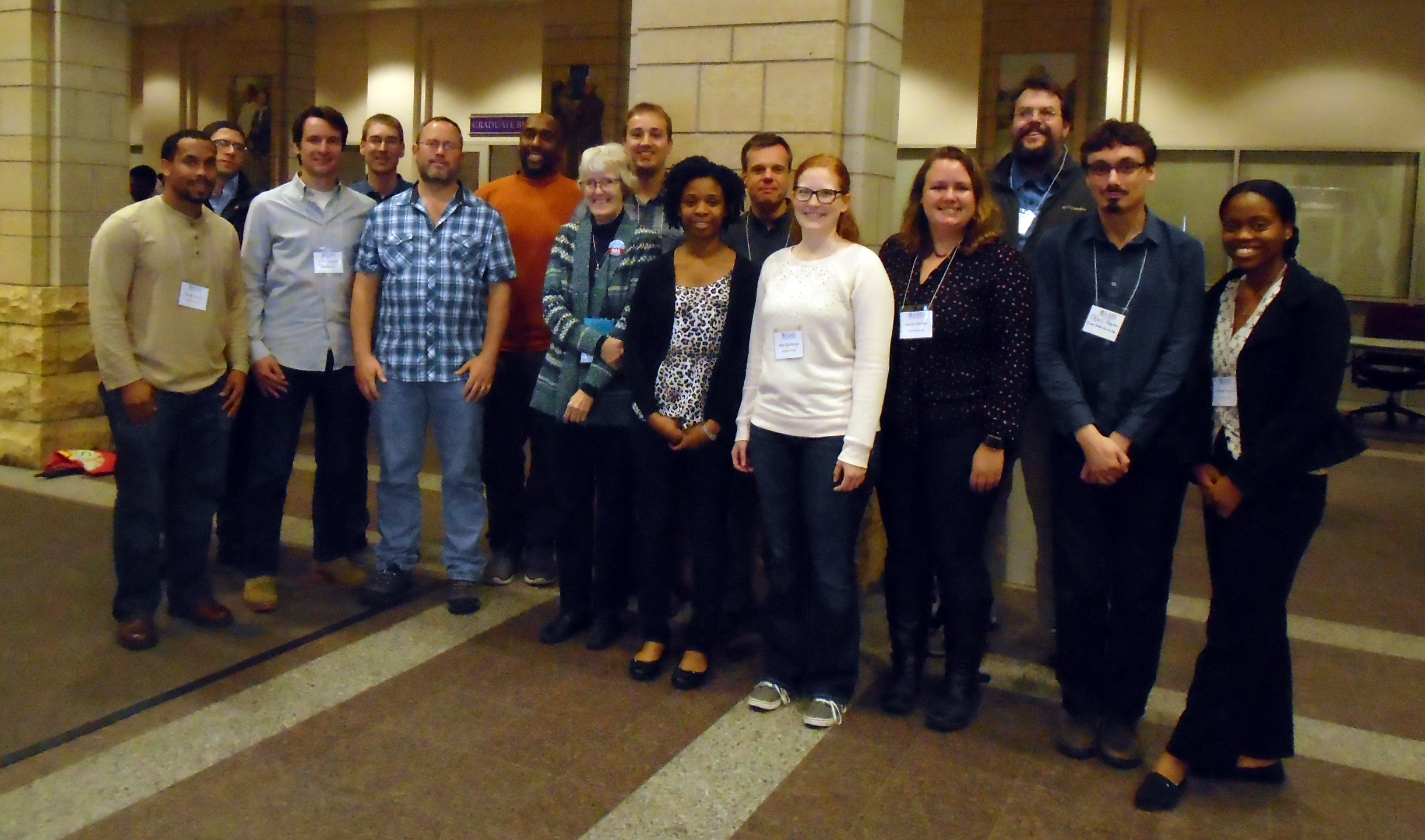Iowa State sends nineteen to AMS Conference


The mentorship between graduate students and faculty in Iowa State University’s Department of Mathematics is one of the reasons so many students choose ISU for their advanced math degree.
In October, nineteen graduate students and faculty attended the American Mathematical Society Fall Sectional Meeting in Minneapolis. Over half of those that went were graduate students.
“It speaks of the relationship that professors and graduate students at Iowa State have with people outside Iowa State,” said Chassidy Bozeman, graduate student in mathematics. “Because of those connections, when people are looking for presenters to come talk at their sections they thought of us.”
The American Mathematical Society (AMS) holds fall and spring sectional meetings in four regional areas each year to promote mathematical research and education.
“It is very important that graduate students attend conferences,” said Leslie Hogben, professor of mathematics, who attended the conference. “In particular, AMS Section Conferences offer a smaller, friendly atmosphere, where it is easy to meet people.”
Bozeman presented her research on the intersection of power domination and zero-forcing at the conference. Power domination, a way of monitoring the power grid by using machines to measure voltage at certain locations, is used to determine the number of steps it takes to read the entire grid while using the least number of machines. The time the steps take is referred to as power propagation time. Bozeman gave a proof that characterized certain graphs with very fast propagation times and also discussed the connection between power domination and zero-forcing, a similar area of research.
“The people that study zero-forcing are not the people that study power domination,” Bozeman said.”But over the last couple of years people have realized that these are basically the same processes. Now people are studying the intersection – what can we say about zero-forcing if we know something about power domination and vice versa.”
Bozeman said that going to the conference helped refine her research.
“You’re talking with a group of people familiar with what you’re doing,” she said. “It’s different than presenting to a general audience. It helps you really focus down and make sure your details are correct.”
Shanise Walker, graduate student in mathematics, said she enjoyed discussing research concepts with other presenters.
Walker presented her own research on vertex identifying codes, which asks: in a multiprocessor system, such as a computer network, where a subset of processors is monitored and tested with a specific software routine, how many processors would be required to identify faulty processors?
Walker said that as a fifth year student, the conference was even more meaningful. She was able to talk with presenters afterward about the assumptions within their research and how to account for more variables. She said the conference is also a good experience for first or second year graduate students.
“We’re very encouraging to our grad students to go out and be exposed to various types of research,” she said. “One of the important things for the first years is if they don’t know exactly what research area they want to go into, this is good exposure.”
In addition to the exposure to other research, the conference is also good exposure to other researchers for networking purposes.
“You get to talk to other people in the field,” Bozeman said. “Eventually if you’re looking for a postdoc or a job they know your face and they know things that you’ve done because they were there and listened to your talk. ”
Kacy Messerschmidt, a graduate student in mathematics, also said the networking at the conference was beneficial.
“Especially if you plan on working in academia it’s good to meet people,” Messerschmidt said. “It helps you in your future career collaborating with them or maybe getting a job.”
Messerschmidt presented on research he began from a Graduate Research Workshop in Combinatorics in July. At the workshop graduate students were split into groups based on problems they were interested in. After the workshop they continued to collaborate via Skype and other electronic means.
Messerschmidt’s group worked together on chromatic graph theory. Chromatic graph theory can be thought of as a computer network represented by a graph. Computers are represented as vertices and connections between them are called edges. Colors are used to represent differing tasks. The research finds ways to ensure that no two vertices that have an edge between them are the same color. The idea is applicable to parallel computing when jobs are sent to different processors but two processors can’t be doing the same task at the same time.
“Students gain visibility by presenting their work,” Hogben said. “They meet potential collaborators, letter writers and employers at conferences. Encouraging students to attend conferences is just one of many things the Iowa State Mathematics Department does to support graduate students in becoming excellent mathematicians, making Iowa State a great place for graduate school.”